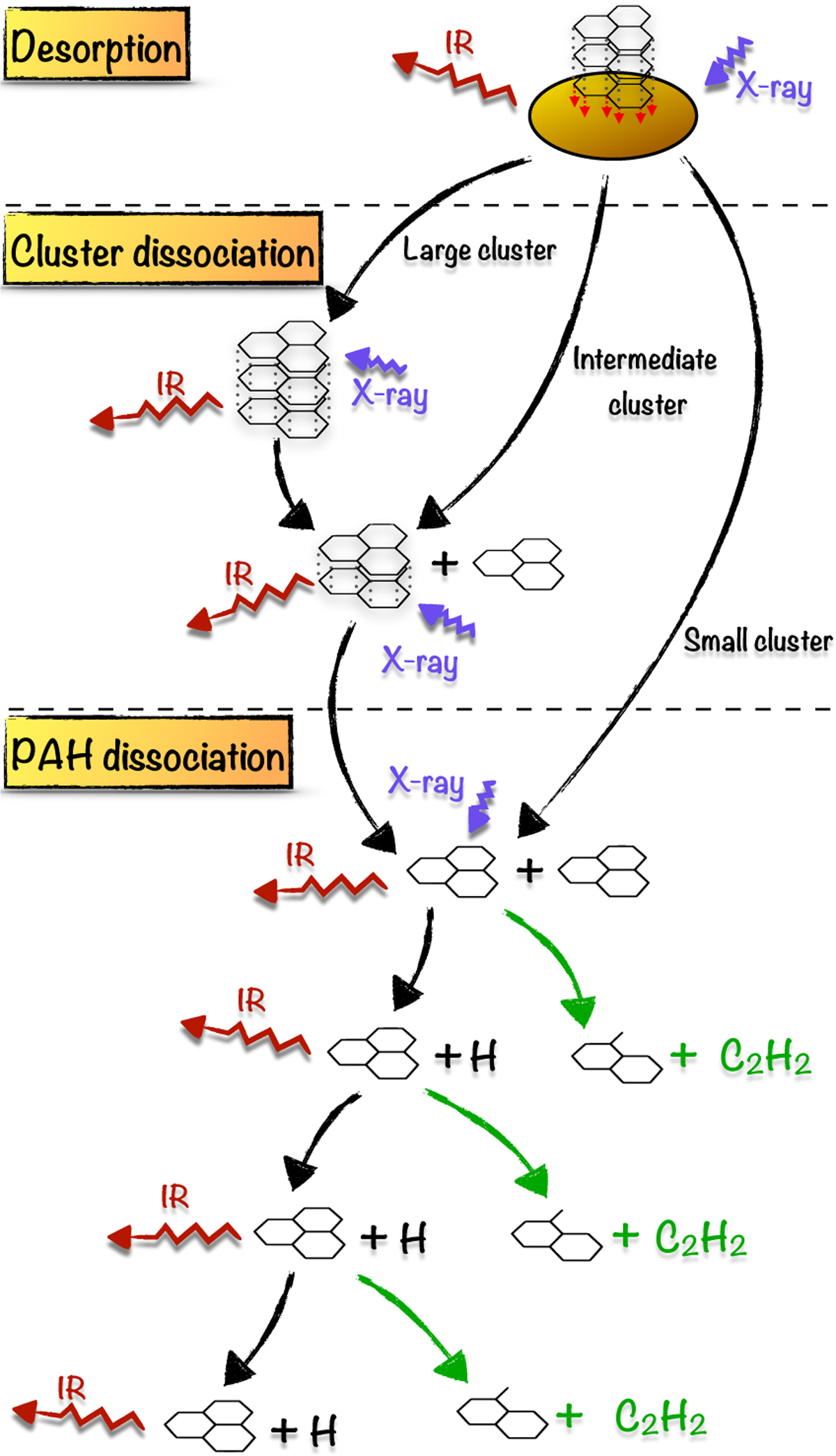Fig. 2

Download original image
Sketch of cascading processes for PAHs in protoplanetary discs. X-rays can trigger evaporation of PAH clusters from dust grains or the vibrational energy of the cluster is transported to the dust grains and emitted as thermal radiation. Dependent on the cluster size and PAH species, the evaporated cluster can be fully destroyed into monomers (small cluster), can lose a few of its monomers (intermediate clusters), or not lose any monomer (large clusters). Then, the subsequent absorbed X-rays break down the cluster until the entire cluster has been dissociated into molecules. Finally, the absorption of X-rays by individual PAH molecules triggers dissociation of H and H2, which cools the PAH without structural damage, followed by IR cooling. Simultaneously, acetylene (C2H2) fragments can be ejected from the PAH, damaging the carbon backbone, which is difficult to repair without complex chemistry.
Current usage metrics show cumulative count of Article Views (full-text article views including HTML views, PDF and ePub downloads, according to the available data) and Abstracts Views on Vision4Press platform.
Data correspond to usage on the plateform after 2015. The current usage metrics is available 48-96 hours after online publication and is updated daily on week days.
Initial download of the metrics may take a while.


